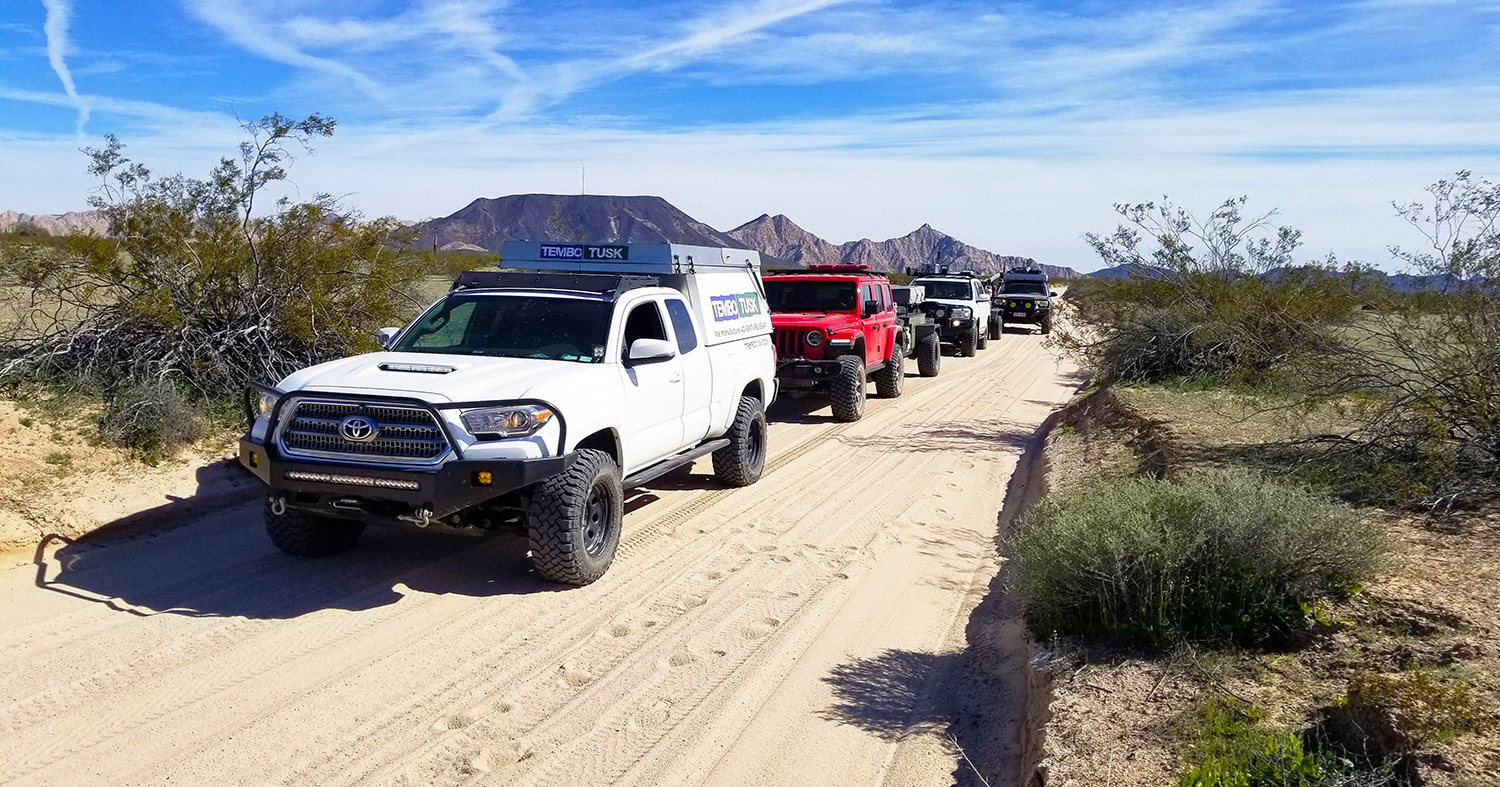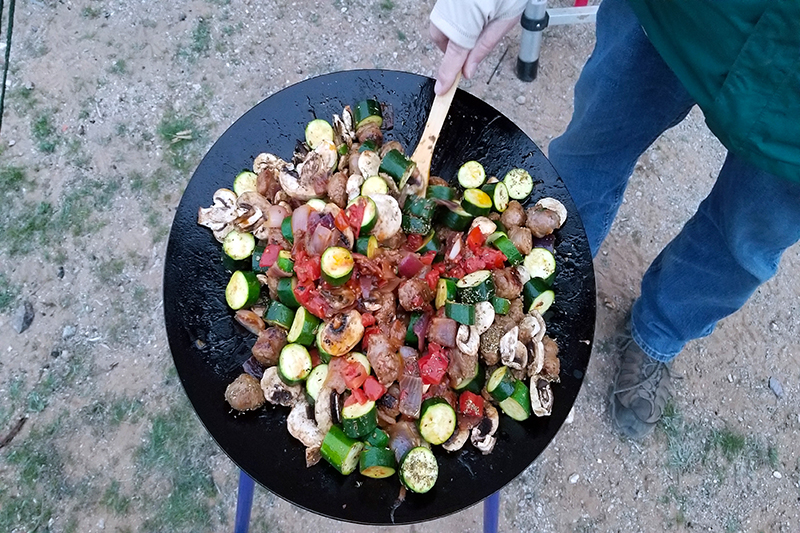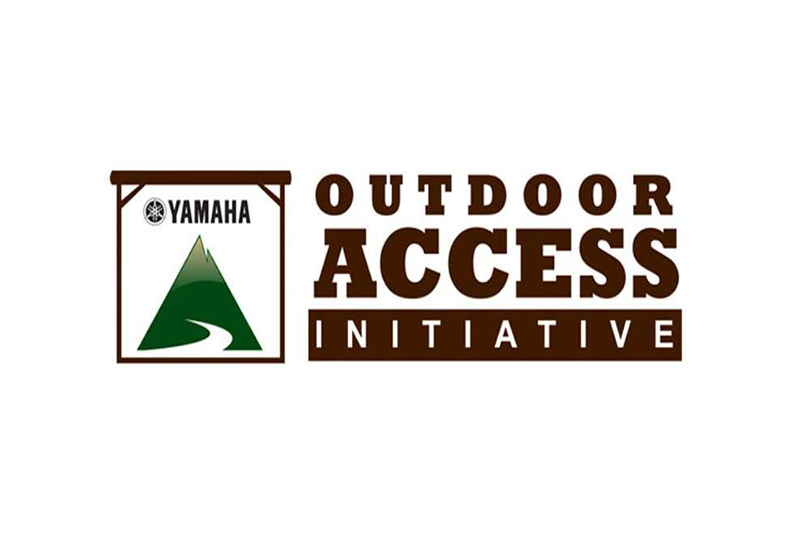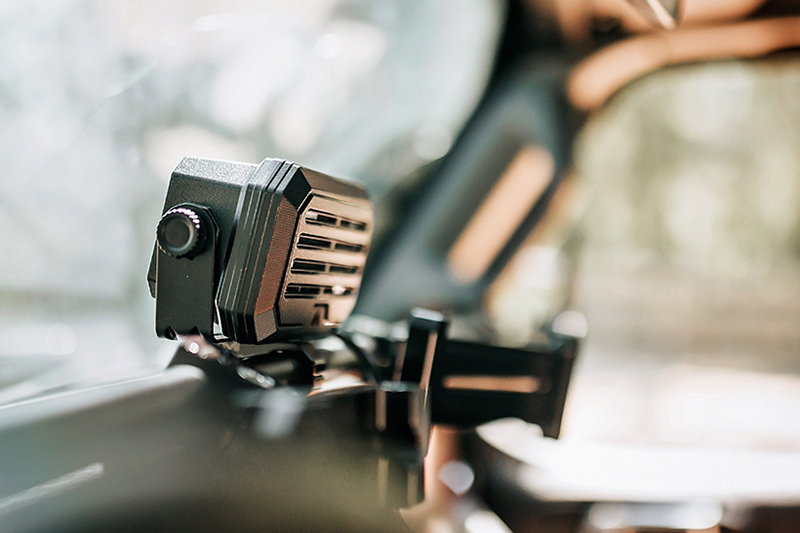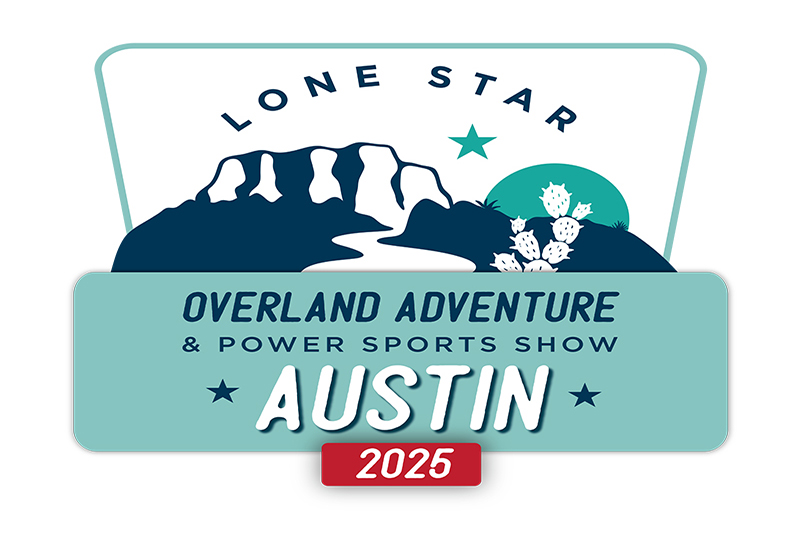The Devil’s Highway is an unforgiving stretch along the Arizona-Mexico border that’s perfect for overland adventure
El Camino del Diablo (CDD) has been around for thousands of years. Starting as a path in Mexico, the CDD was a passage through the dangerous and parched Sonora desert. Historical evidence shows the native peoples used the trail extensively, leaving evidence of their presence in petroglyphs and morteros preserved in the rocks. Later the Spanish Conquistadores marched west on their conquest for the Queen of Spain, and were followed hundreds of years later by pioneers traveling to California on their way to the gold fields. The CDD has been a veritable highway indeed.
The terrain is harsh and unforgiving, easily taking the weak. The “Devil’s Highway” has a well-deserved reputation. Now, the CDD is on the National Register of Historic Places and is a Bureau of Land Management (BLM) Backcountry byway. The CDD is also one heck of a trip to test your mettle. It crosses Organ Pipe National Monument, Cabeza Prieta National Wildlife Refuge and Barry Goldwater Air Force Range.
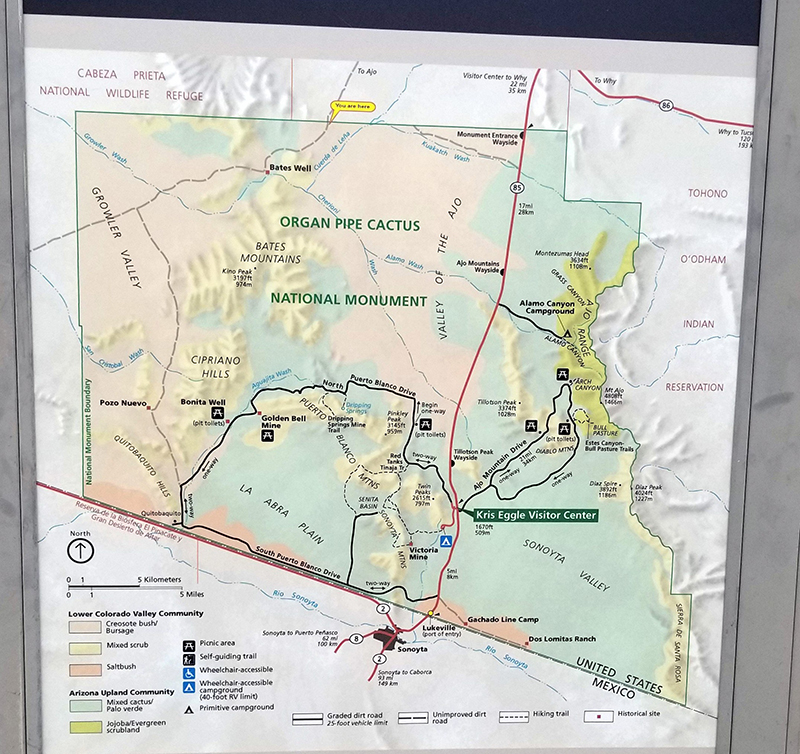
A map overview of the Lower Colorado Valley region
Kirk and I had driven the trail in 2015 and wanted to return. While talking about a new trip, Jerry, of TemboTusk fame, and another friend, Luis, quickly signed up. Kirk was in his 2013 Tacoma with AT Summit, Jerry in his 2016 Tacoma with AT Habitat, Luis in a 2018 JL Rubicon with Jackwagon off-road trailer, and I was in a 2013 Land Cruiser and Smittybilt Scout trailer. We met outside of Why, Arizona and set up the first night’s camp on BLM land.
The next morning the weather looked promising and, as I was collapsing my roof-top tent, I envied Kirk, closing his Summit in a minute or so. We stopped at the Why Not Travel Center to top off gas. Although the CDD is only 157 miles long, with side trips and no idea about the road conditions, it was possible to burn a lot of gas. This would be a good test of my 40-gallon Long Range aux tank. With an on-board fuel pump, I could pump gas into the main tank while driving.
As we finished fueling, the wind started blowing and the temperature dropped 15 degrees. We decided to have a sit-down breakfast at Grannymac’s Kitchen, persuaded by the presence of Border Patrol trucks in the parking lot.
Breakfast was particularly good and, as we left, I thanked the agents for the hard job they do and inquired as to conditions on the CDD. They told us the alien traffic was active and asked if we were armed. Of course, we were. The agents warned us it was going to be “dangerously” cold the next couple of nights.
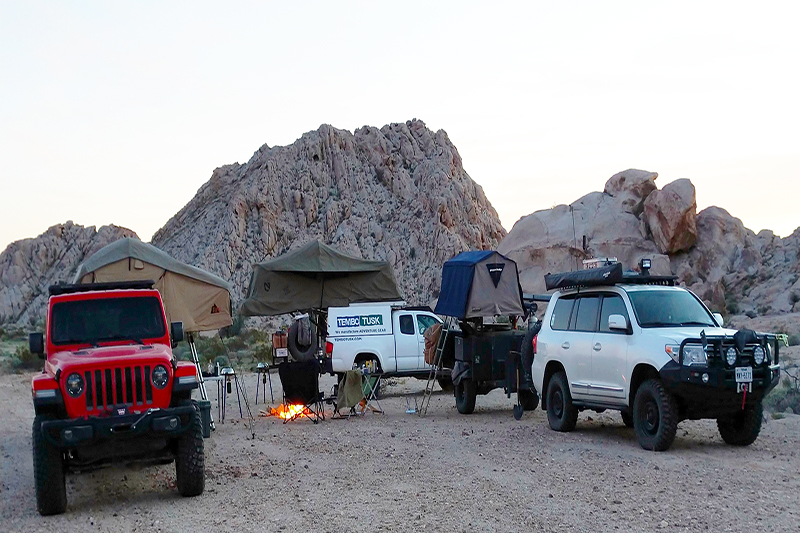
With that in mind, we headed to Ajo and the beginning of the CDD. We stopped and aired down, then with Kirk in the lead, we started off on the road to our first stop, Bates Well and the Gray Ranch.
The Gray Ranch was closed in 1976 after 56 years of ranching. Although the ranch is located on what became Organ Pipe National Monument in 1937, Gray continued ranching until his death. All that remains are the old buildings and windmill. Walking around the area makes one think about life back in the early 1900s. Life was hard in the unforgiving desert environment.
The terrain is covered with mesquite bushes and an army of saguaro cactus, which grow very slowly, almost 100 years to grow 15 feet and start sprouting arms. They are silent witnesses to the history of the area. The weather was dreary with dark rain clouds in the distance. Cold and wind are easy to deal with but rain, especially a cold rain, really tests one’s spirit.
Back on our way, we were chatting on the radio and Kirk spotted a blue flag just off the road. We stopped to explore. A BP agent came by, pausing to chat. He warned us of the extreme cold weather coming in and we asked about the flag. He explained that the flag marks a water barrel placed there by an open borders group. Not far away was a tower with a flashing blue light, one of the many rescue beacons along the border. On the tower is a multilingual sign instructing the reader to push the red button for help. Doing so activates a beacon that alerts the BP to respond to that location. Many of the Border Patrol agents are trained EMTs and there is a specialized unit called Border Patrol Search, Trauma, and Rescue Unit (BORSTAR) whose members are specially trained; they have rescued many people left to die in the desert by the cartels.
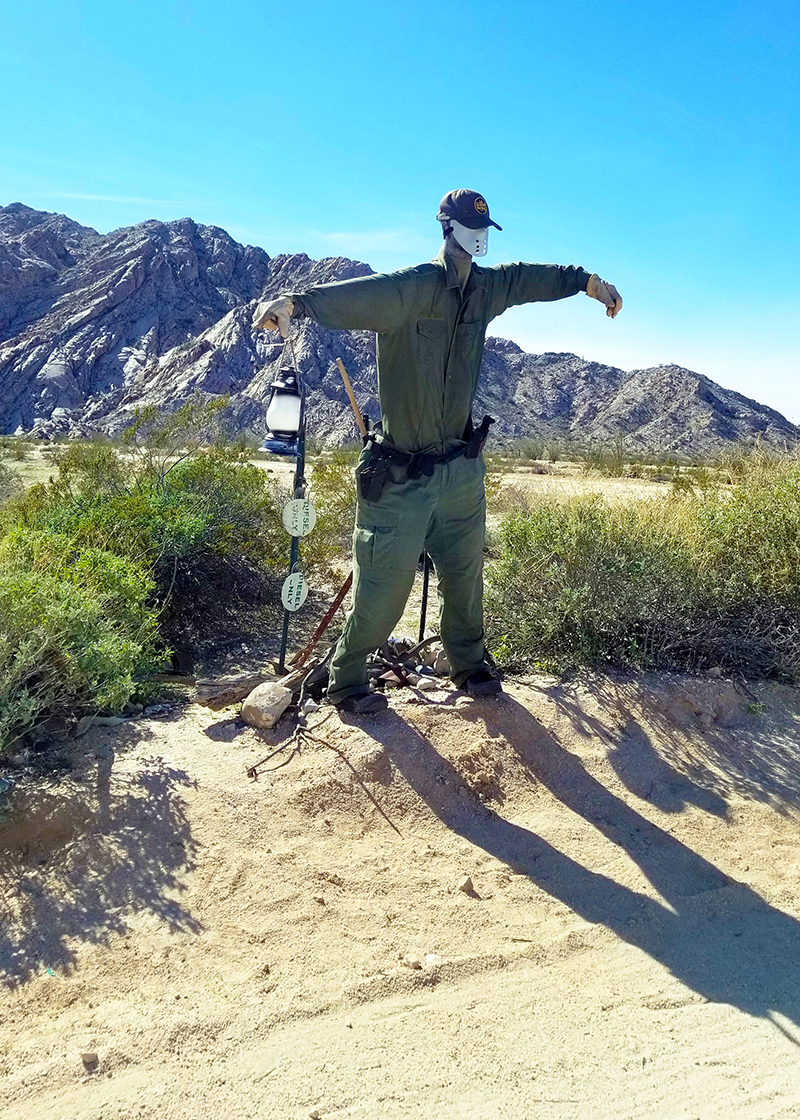
A Border Patrol agent mannequin along the route
The road was good, and we were making good time, enjoying the desert. We came up on the road headed south and a sign indicating Quitobaquito was 15 miles ahead. It was early and off we went. The road changed and went from a two-track to a narrow one-track. Sure enough, we saw a vehicle headed our way.
Soon we were at an intersection with a sign and a large graded road. A huge dump truck roared by as we continued to Quitobaquito. We finally made it and were greeted with a sign and nothing more. The border here consisted of metal posts and barbed wire. On the other side was Mexican Federal Highway Two, with quite a bit of traffic. A couple of large construction trucks drove by and it was apparent there was a construction project along the border. It was a weird juxtaposition of complete isolation in the desert and driving up to see a heavily traveled highway a couple of hundred meters away.
Our first camp on the CDD was at Papago Well. The campground was primitive with a picnic table. I had told the guys I would cook dinner the first night out and made one of my favorite TemboTusk Skottle meals, “Spicy Sausage Skottle.” Everyone pitched in, with Kirk digging a fire pit. Once it was done, we all gathered around the fire and enjoyed the meal under the stars, soaking in the warmth of the fire. We could feel the temperature starting to drop; suddenly it was as if a freezer door had opened and it was time to get into our respective sleeping bags.
At 2 a.m. I had to get out of the tent. The cold was shocking. I stood, admiring the clear, starry night sky, a sight well worth the temporary discomfort of the cold. Back inside my RTT, I fired up the heater (I had finally learned there was no need to tough things out), warmed the tent back up and went back to sleep. Just at dawn, a pack of coyotes started yipping and howling. They were loud. It sounded like there were several in different locations, each of them calling out into the frigid morning, perhaps calling out the sun to come up and warm the desert.
As the sun rose and started to warm my tent, it was finally time to get up. There was still a chill in the air and Kirk’s thermometer showed a low of 30 degrees. Soon we were all in our chairs facing east, taking in the sun like lizards on the rocks. Sufficiently warmed and motivated, we started to break camp talking about what to do next. We were not in a rush so Thule Well was our stop for the next night.
Thule Well is the site of a monument built by Boy Scouts and a flagpole with an American flag. There is also a small cabin with a picnic table and a fireplace. This was the perfect spot. We opened our tents, got out cooking gear and went to the cabin. I was doing some housekeeping in the truck when I saw smoke billowing out of the door and windows of the cabin. Kirk, Jerry, and Luis were standing outside, and I ran over, thinking the cabin was on fire. No, it was not on fire, but the flue was obstructed. Of course, the wind had died down, so we had to wait until the smoke cleared out.
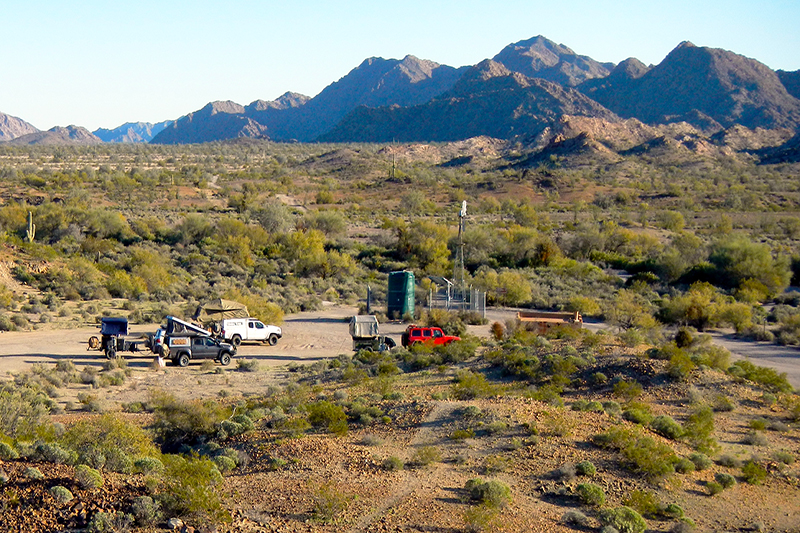
While we were waiting, a Border Patrol truck passed by and made a U-turn. The agent asked if we were camping here, and then the usual question, “Are you armed?” He approved of our response and said he would pass the word to the other agents so they could check on us.
I fired up the Coleman lantern, Luis fired up the Buddy heater and the cabin became very cozy. As dinner was being cooked, the smoke from dinner threatened to drive us out again. Later we sat around the heater and solved the problems of the world. As we walked to our tents the night sky was amazing. We were lucky to be so isolated from civilization that we could see and wonder in the nighttime splendor.
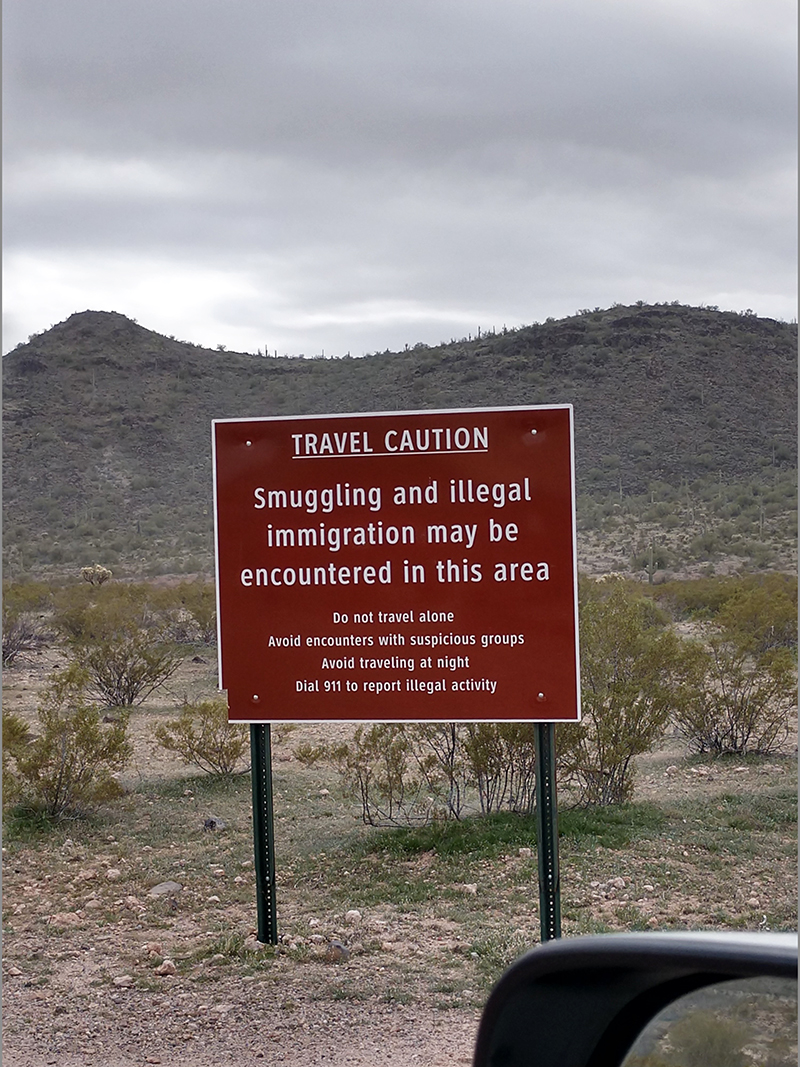
It was time once again to get up as the sun hit the tent and we all made our way to the cabin. Skottles were fired up for breakfast. I had brought a New Jersey delicacy, Taylor Ham, for the group. Soon the cabin was filled with the smell of ham cooking. It is always a good feeling to make some converts to the joys of Taylor Ham.
As we were cleaning up, we could hear a helicopter close by. It was flying low and banked towards us. We waved and the spotter waved back. Luis had stepped away for the call of nature and just after the helo passed us, it made a sharp bank right over where Luis was. Yup, they were checking on us and in a good way. After breakfast, we had to head toward Yuma. We still had one more night on the trail, but the end was near. There were a couple of different routes to take and we choose to route closest to the border. As we were driving, Kirk called out on the radio, “There’s a guy up ahead with his arm out. I think he is a Border Patrol agent.”
As we got closer we were surprised by a lifelike mannequin dressed in a Border Patrol uniform, gun belt, arm stretched out and holding a lantern. To make this even more surreal the mannequin had a “Jason” hockey mask. This was either the work of some imaginative Border Patrol Agents or some anti-BP entity. I do know it would scare the life out of someone at night.
As we traveled along the Barry Goldwater bombing range, we could hear F-16s crisscrossing the sky. Out in the distance is a complex called “Yodaville,” a collection of shipping containers and vehicles configured to represent an urban environment, painted and made to look as real as possible, providing Forward Air Controllers (FACs) and pilots a realistic training experience. This type of training is invaluable in taking the fight to the enemy and reducing collateral damage.
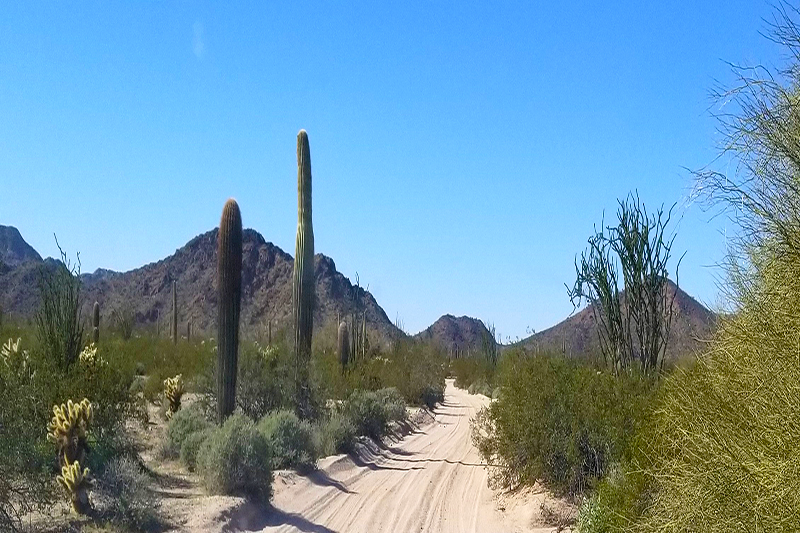
A look at a portion of El Camino del Diablo
Traveling towards Tinas Altas we saw a truck at the side of the road and a couple of UTVs stopped. We were soon upon them and there was a range warden checking for permits. The warden was friendly and asked who we were and what we were doing, asking for our permits. Of course, I forgot mine and could not find the e-mail with it. Jerry and Luis had theirs and we were on our way. The warden suggested always taking a picture of the permits.
We passed several more side by sides and soon were looking for a spot to spend the night. We followed a track off the main road and found a beautiful spot up against some large rocks. Once set up, fire started and drinks in hand, we enjoyed an amazing sunset. We talked about the need to come back and spend more time to see all the sights we missed. After dinner, we stayed up later than usual, not wanting to face the reality of heading out the next morning. A couple of coyotes serenaded us as we retired to our tents.
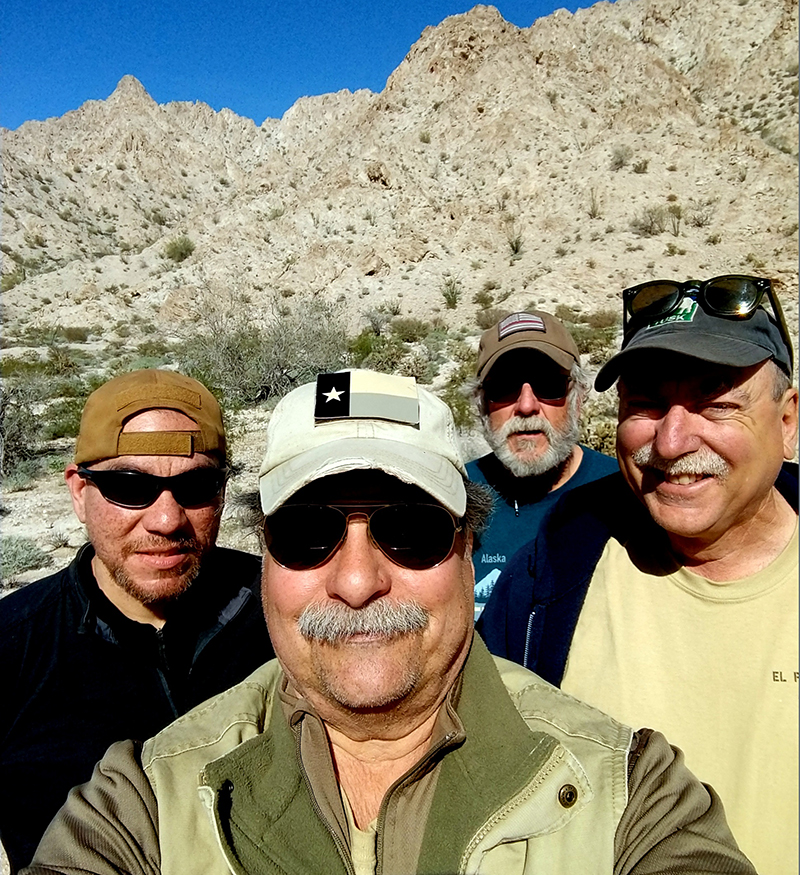
Our motley crew of adventurers
In the morning the sun quickly warmed our tents and soon we were up making coffee and talking about the long drives ahead of us. The road out to Yuma was very sandy and some of the worst washboard I’ve experienced. The ruts seemed to be spaced wider than past experiences so finding the right speed was elusive. It was a slow, bumpy drive and suddenly we were in a neighborhood. We had reached the end of the CDD and were already talking about coming back.
OutdoorX4 Magazine – Promoting responsible vehicle-based adventure travel and outdoors adventure


